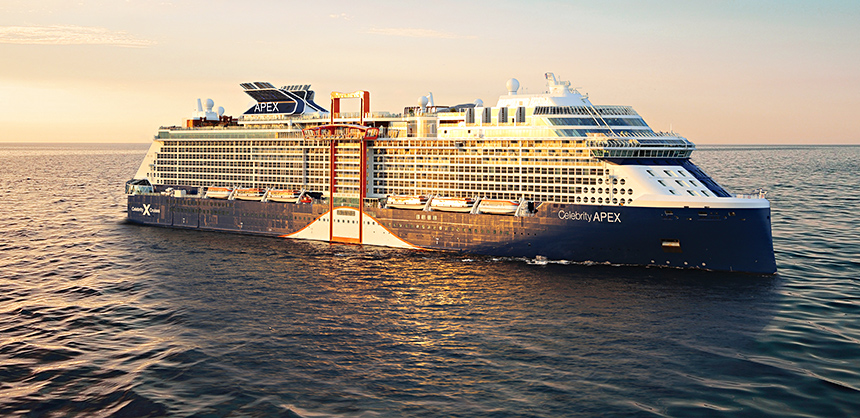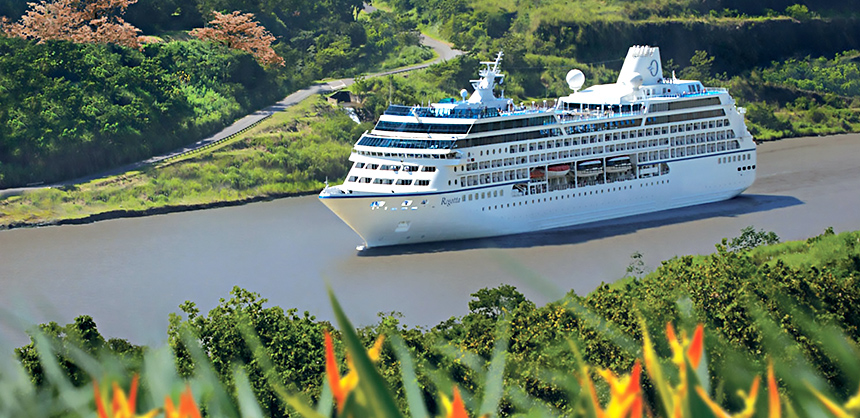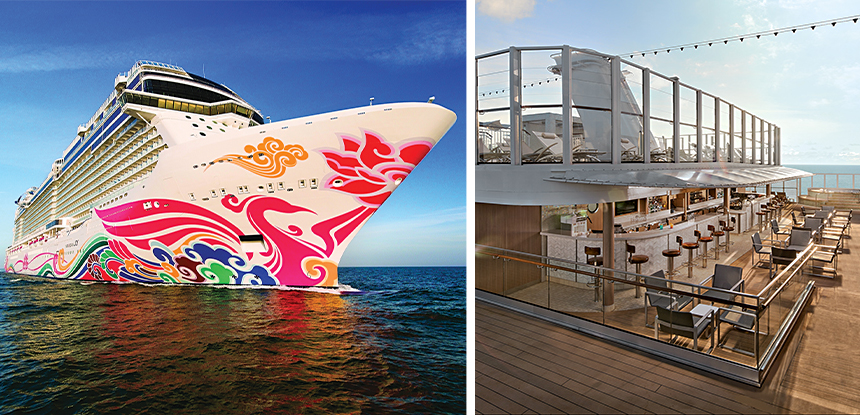Smooth Sailing Ahead:July 7, 2020
Cruise Lines Are Looking Forward to Calmer Seas in the Near Future By David SwansonSmooth Sailing Ahead:
Cruise Lines Are Looking Forward to Calmer Seas in the Near Future

As America grapples with the global pandemic caused by COVID-19, the meetings industry is evaluating how and where it can regroup in the months and years to come. For the short term, big gatherings are out; overseas travel doesn’t work. But travelers are itching to bust out, and green shoots are starting to emerge, sprouts that bode well for the rebirth of the meeting and incentive industry next year and beyond.
As leisure travelers emerge from their coronavirus inspired, government-mandated cocoons, isolating and working from home, they are individually laying the groundwork for the travel industry as a whole to reopen and get back to business.
Staycations and regional travel have already planted the seed and, as airplane routes are brought back and borders reopen for U.S. passport-holders, the desire to meet face-to-face and interact with our work colleagues will follow soon after.
And, surprisingly, cruise lines are readying their ships for embarkation. Some of the more problematic instances of the coronavirus entering the United States originated on cruise ships at the start of the pandemic. On March 13, Cruise Line International Association (CLIA) announced an immediate, 30-day suspension of all cruises operating from U.S. ports. Ships operating out of foreign ports followed shortly thereafter. Since then, cruise lines have cancelled departures one or two months at a time as the pandemic unfolded. CLIA, the cruise industry’s Miami-based trade association, currently has a “no sail” order in effect through September 15, 2020, though many cruise lines have cancelled sailings even later.
But cruise vacations will return. Cruise Critic, perhaps the leading consumer information site for cruisers, has been connecting with its readers to gauge attitudes. In a recent survey of 2,897 Cruise Critic readers, only 2% said they would not book a future cruise, while 74% overall said they will. Nearly 33% of respondents were already looking to book a future cruise. “People who have cruised and understand the product know what it is and feel much more comfortable with returning,” says Colleen McDaniel, editor-in-chief of Cruise Critic.
The Industry is Adapting
Karen Devine, CITP, founder and CEO of 3D Cruise Partners, predicts that leisure business will be first to get back into the water. “Relative to the travel industry, many of us who’ve been around for a long time have been making comparisons to 9/11,” Devine says. “Everyone said, ‘No one’s going to travel anymore.’ But we’ve been through things in the past that seemed intimidating and dramatic, and we did come back, with new protocols, and we adapted. Think about it. Before 9/11, the TSA didn’t exist, we didn’t take our shoes off at airports and we didn’t have limits on 3-ounce bottles.”
McDaniel concurs. “We’re already getting used to some things on land that we never thought we would be undergoing,” she says. Like many working with cruise lines, McDaniel thinks the industry has been held to a higher standard. “Cruise lines have long had health and safety at forefront of any protocols they put in place,” she says. “They’ve had to report things that other industries have not, and so they get into the news easily when things go wrong.” For example, norovirus outbreaks are commonly reported when they happen at sea, but less well known is that the majority of norovirus outbreaks occur in long-term care facilities for the elderly, according to the Center for Disease Control (CDC).
While some cruise lines have been mum on how their standards will adapt to the pandemic, Devine says that, in some ways, the industry is already ahead of other travel sectors. “Some of what airlines and hotels are starting to do has been done on ships for years,” Devine says. “The cruise industry has long required guests to use hand sanitizers before entering restaurants, and hand-washing stations have become standard in buffet restaurants on the newer ships. The CDC already requires ships to have certain sanitation protocols in place, including the products they use.” The industry also funds the CDC’s Vessel Sanitation Program, which monitors and investigates gastrointestinal illnesses, trains crew on public health practices and conducts periodic, unannounced ship sanitation inspections. The program is in place for any ship that calls on a U.S. port. In addition to reducing capacity on ships, some of the new protocols being discussed include moving away from self-serve at buffet restaurants, adding more shows so that theaters are not filled to capacity, and staggering the check-in and embarkation process to eliminate crowding.
In a recent webinar sponsored by Travel Weekly, Katina Athanasiou, CITP, chief sales officer for Norwegian Cruise Line, shared the line’s new “Peace of Mind” policy, designed to ensure the health, safety and confidence of both guests and crew, onboard and onshore. The policy covers not only Norwegian, but also Regent Seven Seas and Oceania Cruises, both part of Norwegian Cruise Line Holdings. Among the policies Athanasiou announced are enhanced screening protocols, including a more extensive pre-embarkation health screening, touchless temperature checks and continuous health monitoring throughout each voyage. The line is also working with the CDC to implement increased ship sanitation measures, so that ships are thoroughly cleaned between each sailing. Social distancing will be required, in part by reducing the number of guests onboard, and medical centers will be fully equipped with latest medical supplies, including onboard testing for COVID-19. Before Norwegian’s ships start cruising again, the line is installing all-new medical grade air filters, fleet-wide. “These are H13 HEPA filters to be specific, that remove 99.9% of airborne pathogens to ensure that clean air is continuously put throughout the ship,” says Athanasiou, who noted that H13 filters are fine enough to catch particles of COVID-19.
The cruise line is also extending its initiatives to the ports and shore excursions. “We’re partnering with local destinations and tour operators to ensure that the protocols we’re creating onboard extend fully to the shore-side experience,” Athanasiou says. “We will only visit safe, open ports of call, and we will work to make sure we have the right itineraries and providers so that everything we’re doing on board to keep the safety and health of our collective guests is extended while we go shore-side.”

Oceania Cruises’ Regatta pictured in the Panama Canal. The 684-passenger ship was reimagined last year, with updated amenities throughout. The ship features four open-seating restaurants, the Aquamar Spa + Vitality Center, eight lounges and bars, a casino and 342 suites.
Still an Advantage Over Land
Other recent cruise innovations will come to serve new, unanticipated needs. “We can expect technology to play a bigger role,” McDaniel says. “MSC Cruises developed Zoey, which is their version of what people know of as Alexa. Royal Caribbean, Celebrity and Princess Cruises have introduced touchless technology, such as the Ocean Medallion. All of these were designed pre-COVID to make the cruise experience more seamless and provide passengers a great experience that involves less interaction.”
But as much as the onboard experience will evolve, Mark Conroy, managing director for Americas Silversea Cruises, stresses that the heavy lifting begins before embarkation. “Unlike what the media thinks, COVID-19 does not start on cruise ships,” Conroy says. “The idea is to make sure ill people — crew and guests — don’t get on the ship through proper screening.”
Adds Devine, “There’s something important about ships, relative to hotels — the crew doesn’t go home at night. They’re onboard and they will be undergoing stringent testing protocols. Therefore, the opportunity for virus spread is further mitigated. The standards will be so strict.” The benefits of using cruise ships for meeting and incentive programs aren’t new, but a growing number of companies are finding that the sea offers an edge over traditional land-based programs. Meeting planners who’ve handled the logistics know how challenging it can be to assemble the many and various pieces for a successful event. Between room blocks, transportation, dining venues, meeting rooms, A/V requirements and activities to appeal to a multifaceted group, fitting together the puzzle pieces requires a commitment of time, energy and money.
But cruise-based programs streamline many elements of event planning. And, by assembling the disparate functions under one umbrella, logistics can be contained; budgeting is more predictable. Meeting planners we’ve spoken to say that such bundling also usually leads to cost savings over comparable land-based meeting options.
These were some of the advantages cited by Walker Strickland, chief operating officer for The Pritchett Company, a subsidiary of the Symmetry Financial Group. Strickland oversaw planning for a 300-person Caribbean incentive trip last summer aboard Royal Caribbean’s Empress of the Seas.
“The biggest appeal for us was having everyone in one place,” Strickland says. “When you have that many families and couples, there were all these activities we could do on the ship, or we could section off into groups. We could have everyone in one area, or not. When you go to a resort with that many people, they tend to meander around and do their own thing. Royal Caribbean was great in how they handled our dinners, which were organized so we were seated together in same area. And that all-inclusive cost was really nice.” Strickland adds, “You can do a program at an all-inclusive for about the same price, but going in and out of Florida is less expensive,” compared to flying into the Caribbean.
The advantages of a cruise-based incentive aren’t limited to meeting planners. Devine says attendees love them. “Your guests will unpack once, but they’ll wake up somewhere different every day,” she adds. “You’re giving them multiple experiences, even on a three- or four-night cruise.”
Today, meeting and incentive planners are facing new challenges as they look to a post-COVID-19 future. “This is a risk-averse audience,” Conroy says.
“Most of the incentives we had for this year have rebooked for next year, or they want to push the program to 2022 — only one or two cancelled entirely. Most of them are assuming that by this time next year we’ll have a vaccine or treatment or maybe both, so that ill people don’t get on the ship.”
Silversea, which has a fleet of nine luxury ships, including two debuting later this year, specializes in charter and group business. Conroy says the market represents close to 20% of the company’s business, in part due to the size of the vessels. The line’s largest three ships have a capacity of 600 guests each, while Conroy says Silversea’s 380-passenger ships are the ones most frequently used for charters, in part because there is virtually nothing else in the industry at that size.
For this year, the 100-passenger, all-suite Silver Origin is set to start sailing with passengers soon; the ship will be dedicated year-round to the Galapagos Islands. The suites are the most spacious in the Galapagos, each measuring at least 325 sf, with butler service provided throughout. Silver Origin also features two full-service restaurants offering gourmet cuisine and emphasizing a farm-to-table Ecuadorian focus. Arriving this fall, Silver Moon is a twin of the popular Silver Muse, which came out three years ago. Silver Moon will carry 596 guests in all-suite comfort, and will introduce the new Sea And Land Taste (SALT) program, an immersive culinary concept to enable guests to travel deeper into the destinations based on gastronomic experiences.
Like many in the industry, Conroy is confident in the future of cruising. “The virus has proven that we can’t do all our meetings by Zoom,” Conroy says. “There’s nothing quite like social interaction. If there’s a vaccine, I think you’ll see the business come back as fast as it went away.” Conroy recommends that prospective incentive clients book early, especially to charter the smaller ships. “If you’re chartering, ideally it’s two years in advance,” he says. “They can write the itinerary they like, customize the program and then we build our schedule around that charter. A year out, and I may have to charge you for the customers I displace.”
Like all lines, Windstar Cruises is seeing 2020 play out differently than planned, but the small-ship operator has a unique advantage. Windstar’s trademark silhouette is offered by a trio of sailing ships, ranging from 148 to 300 passengers. But in 2015-2016, the line acquired three older 212-passenger ships from Seabourn. This year, all three were scheduled to be in dry dock at different points for a four-month lengthening process, a $250 million initiative to add 50 cabins. The extension would also add two new dining options to each of the three ships, and upgrade the engines to cleaner technology.

The Benefit of Small Ships
Although COVID-19 has delayed shipyard work, Amy Conover, Windstar Cruises director of charter and incentive sales, says the line is reaping the benefit of size — something that will continue even with three ships adding 100 passengers.
“I’m getting more requests for groups and charters because of our small ship size,” Conover says. “When you think of social distancing, we’ve had that built in — our ships are inherently in that realm. And because we go to small islands in the Caribbean, we’re desirable for companies looking for safe places for their top producers. We also go to Tahiti, which is really desirable now because it’s COVID-19-free and it’s one destination on the itinerary.”
Steve Simao, Windstar’s vice president of sales, says the line’s size optimizes customization for charters. “We’re small and nimble, traveling with only 300 or so guests,” Simao says. “Even at our corporate office in Seattle, you’re not going through a lot of red tape to get things done. We can customize things in a way that the big companies can’t, because we don’t take a cookie-cutter approach.”
A record 25 new ocean cruise ships were scheduled to take to the water in 2020. All have been paused in some way, and ships scheduled for 2021 will also experience delays. But there are exciting ships on the immediate horizon. In 2018, Celebrity debuted the well-received Celebrity Edge, the line’s first new ship in six years and, in the fall, a sibling arrives. Celebrity Apex will continue many of the design concepts that made the 2,910-passenger Edge a hit — innovative accommodations that meld indoor and outdoor living, a terraced pool deck, rooftop garden and a Magic Carpet on the ship’s right side that doubles as tender boat access, as well as a dining option. Both Edge-class ships, like most of the Celebrity fleet, have dedicated meeting venues — in this case, the 1,970-sf Meeting Place, situated to provide ocean views. The space can be configured for general sessions, conferences, banquets or cocktail seating, and is equipped with top-notch A/V.
Regent Seven Seas Cruises christened its second Explorer-class ship, Seven Seas Splendor, in February, but quickly put voyages on hold as the pandemic emerged. The ship continues the opulence exhibited aboard Seven Seas Explorer, which arrived to much fanfare in 2016, and similarly boasts of a $5 million art collection, lavish suites, including the 4,443-sf Regent Suite and a Culinary Arts Kitchen with 18 stations for hands-on gourmet cooking demonstrations.
These and other ships under construction will be key to reinvigorating the cruise industry as the threat of the pandemic fades, and meetings and groups start to travel again.
“I can see a light at end of the tunnel, and it’s getting brighter and brighter,” Devine says. “Only in the last two weeks have we started to get inquiries — more into 2022 than 2021. But, as soon as people see the ships back in the water, and people start experiencing and reporting on their cruise, there will be a domino effect.” I&FMM








